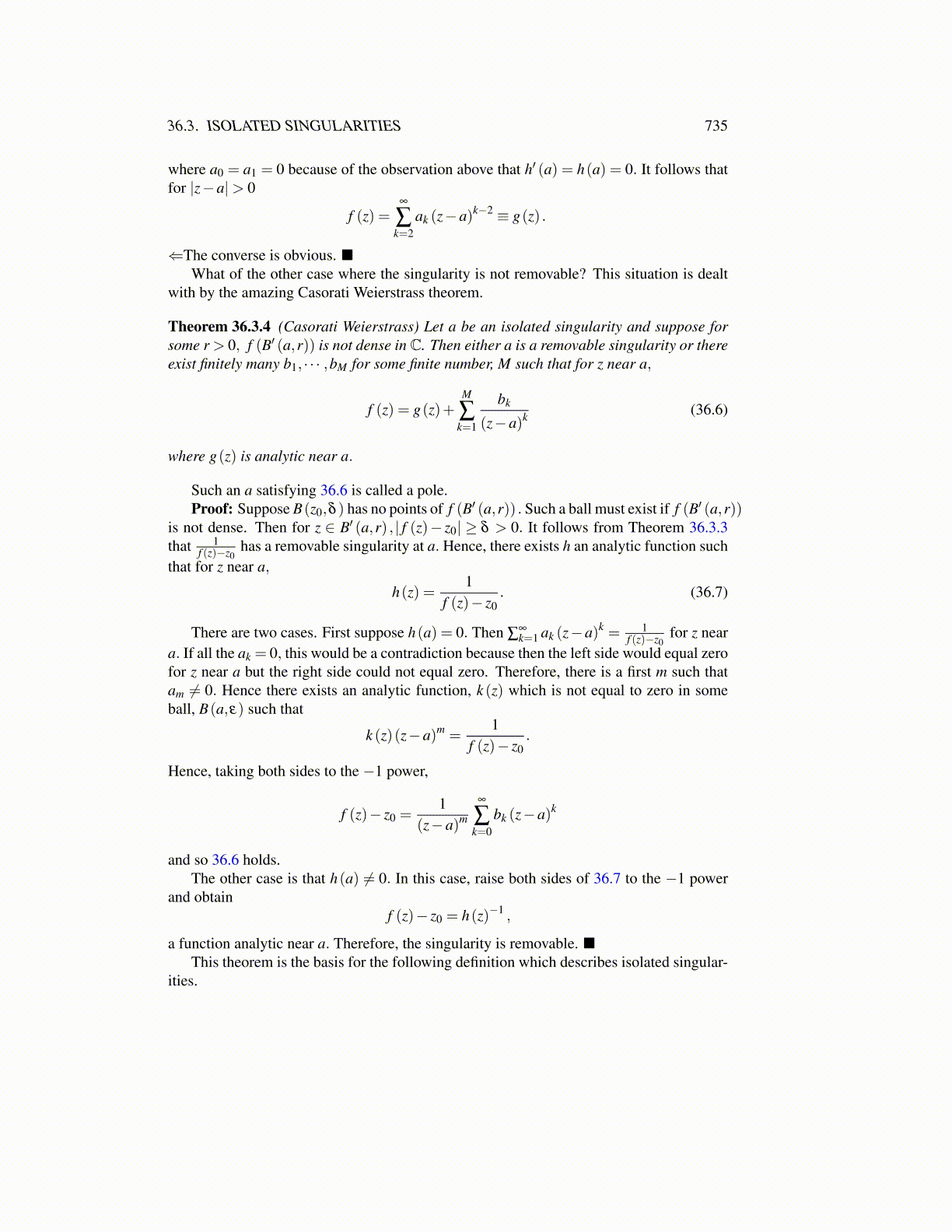
36.3. ISOLATED SINGULARITIES 735
where a0 = a1 = 0 because of the observation above that h′ (a) = h(a) = 0. It follows thatfor |z−a|> 0
f (z) =∞
∑k=2
ak (z−a)k−2 ≡ g(z) .
⇐The converse is obvious. ■What of the other case where the singularity is not removable? This situation is dealt
with by the amazing Casorati Weierstrass theorem.
Theorem 36.3.4 (Casorati Weierstrass) Let a be an isolated singularity and suppose forsome r > 0, f (B′ (a,r)) is not dense in C. Then either a is a removable singularity or thereexist finitely many b1, · · · ,bM for some finite number, M such that for z near a,
f (z) = g(z)+M
∑k=1
bk
(z−a)k (36.6)
where g(z) is analytic near a.
Such an a satisfying 36.6 is called a pole.Proof: Suppose B(z0,δ ) has no points of f (B′ (a,r)) . Such a ball must exist if f (B′ (a,r))
is not dense. Then for z ∈ B′ (a,r) , | f (z)− z0| ≥ δ > 0. It follows from Theorem 36.3.3that 1
f (z)−z0has a removable singularity at a. Hence, there exists h an analytic function such
that for z near a,
h(z) =1
f (z)− z0. (36.7)
There are two cases. First suppose h(a) = 0. Then ∑∞k=1 ak (z−a)k = 1
f (z)−z0for z near
a. If all the ak = 0, this would be a contradiction because then the left side would equal zerofor z near a but the right side could not equal zero. Therefore, there is a first m such thatam ̸= 0. Hence there exists an analytic function, k (z) which is not equal to zero in someball, B(a,ε) such that
k (z)(z−a)m =1
f (z)− z0.
Hence, taking both sides to the −1 power,
f (z)− z0 =1
(z−a)m
∞
∑k=0
bk (z−a)k
and so 36.6 holds.The other case is that h(a) ̸= 0. In this case, raise both sides of 36.7 to the −1 power
and obtainf (z)− z0 = h(z)−1 ,
a function analytic near a. Therefore, the singularity is removable. ■This theorem is the basis for the following definition which describes isolated singular-
ities.